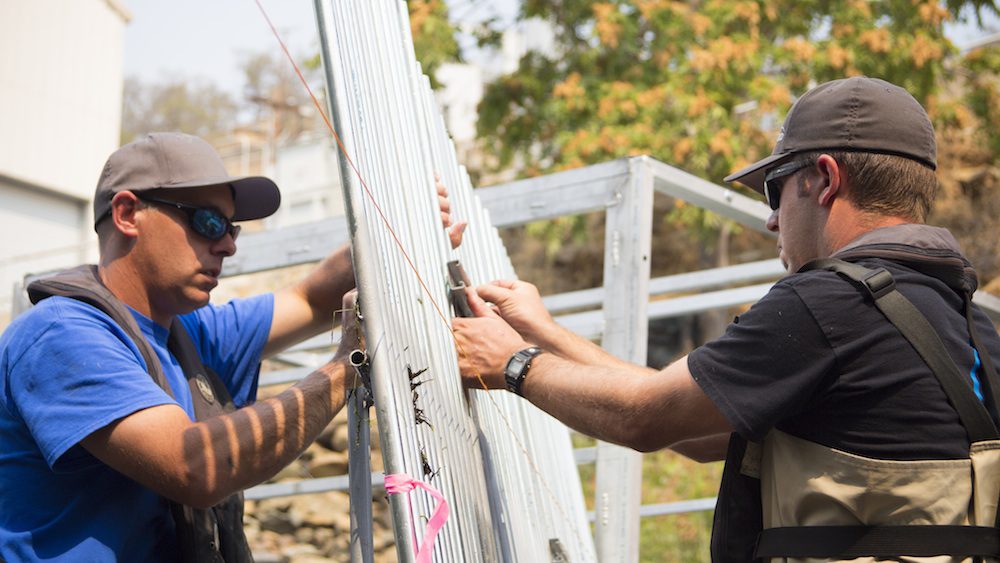Friday November 1, 2019
In today’s Flashback Friday, we describe the installation of a rigid weir to monitor both upstream and downstream fish passages – including with a video of the work in action!
One of the more unique monitoring solutions created by our FABLAB is the rigid weir featured in our post Rigid by Design, a project constructed to track fish passing both upstream and downstream of the project location. While fabricating the weir was an extensive process in itself, the process of installing the two-segment weir in two channels separated by a large in-river island was an all-hands effort that took several days to complete, as shown in our newest highlight video. What isn’t apparent in the video is that the installation challenges were exacerbated by the smoky conditions created by the Tenaya Fire in nearby Yosemite National Park.
To reach the monitoring site located deep in a canyon, our installation team was assisted by a crane operator to transport the large and heavy weir components. The composition and uneven depth of the riverbed posed additional challenges for installation. The substrate of large cobbles made for uneven footing and gave us a difficult time in lining up the weir panels. Solving these challenges required some meticulous work, including applying struts across all the panels to keep them connected and in place. The problem of gaps at the bottom of the panels created by the uneven riverbed (which could allow fish to slip through undetected) was solved by sliding small pipes down through the weir pickets in order to extend their length, as seen on day three of the highlight.
 The design and implementation of this weir is one of our more creative and challenging projects. Throughout the course of the monitoring season, the structure has survived being bombarded by large mats of debris being swept downriver at high flows. The rigid, tripod-like design of the panels has allowed it to survive substantial debris loads, while continuing to collect reliable data. Make sure to check out our highlight video to see how it all came together.
The design and implementation of this weir is one of our more creative and challenging projects. Throughout the course of the monitoring season, the structure has survived being bombarded by large mats of debris being swept downriver at high flows. The rigid, tripod-like design of the panels has allowed it to survive substantial debris loads, while continuing to collect reliable data. Make sure to check out our highlight video to see how it all came together.

